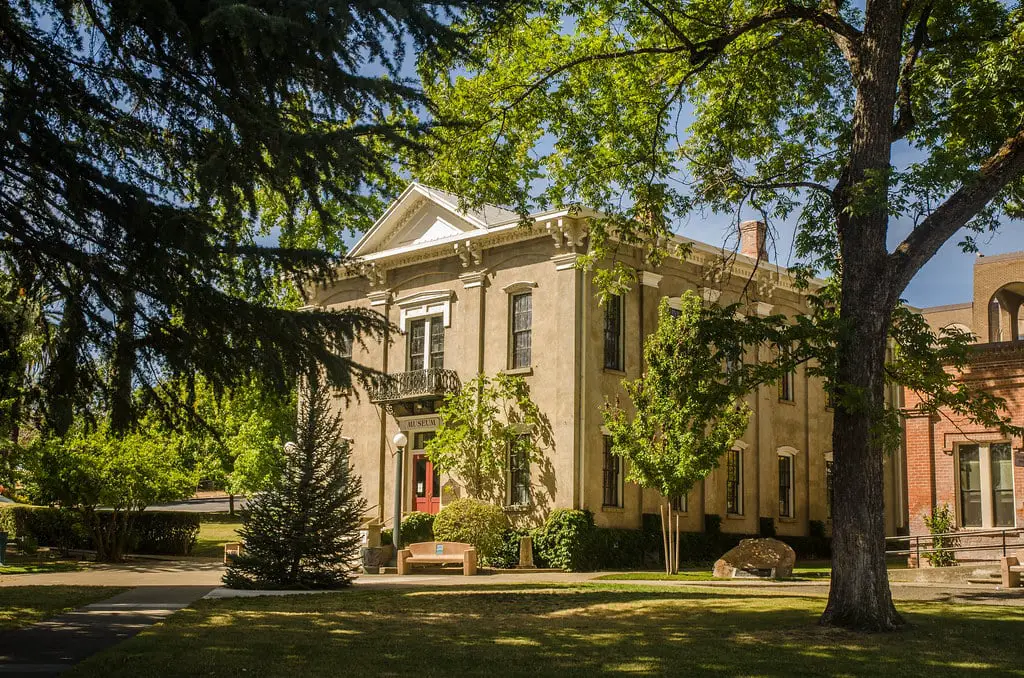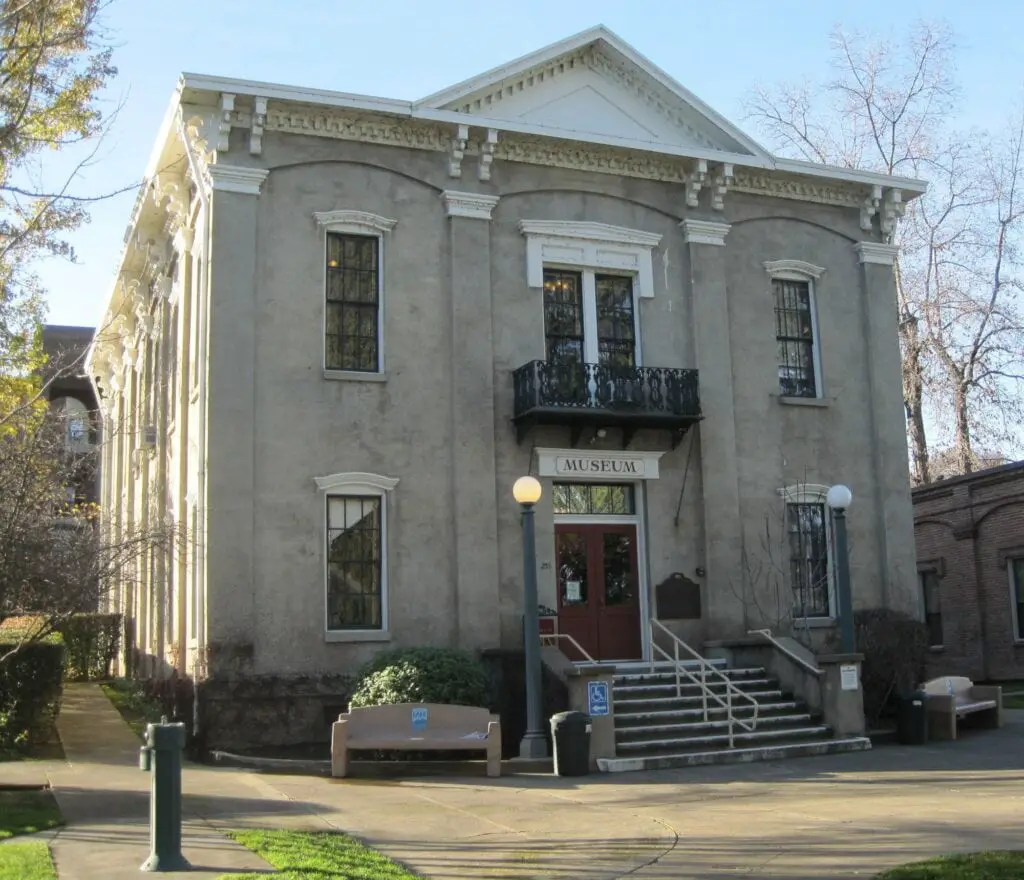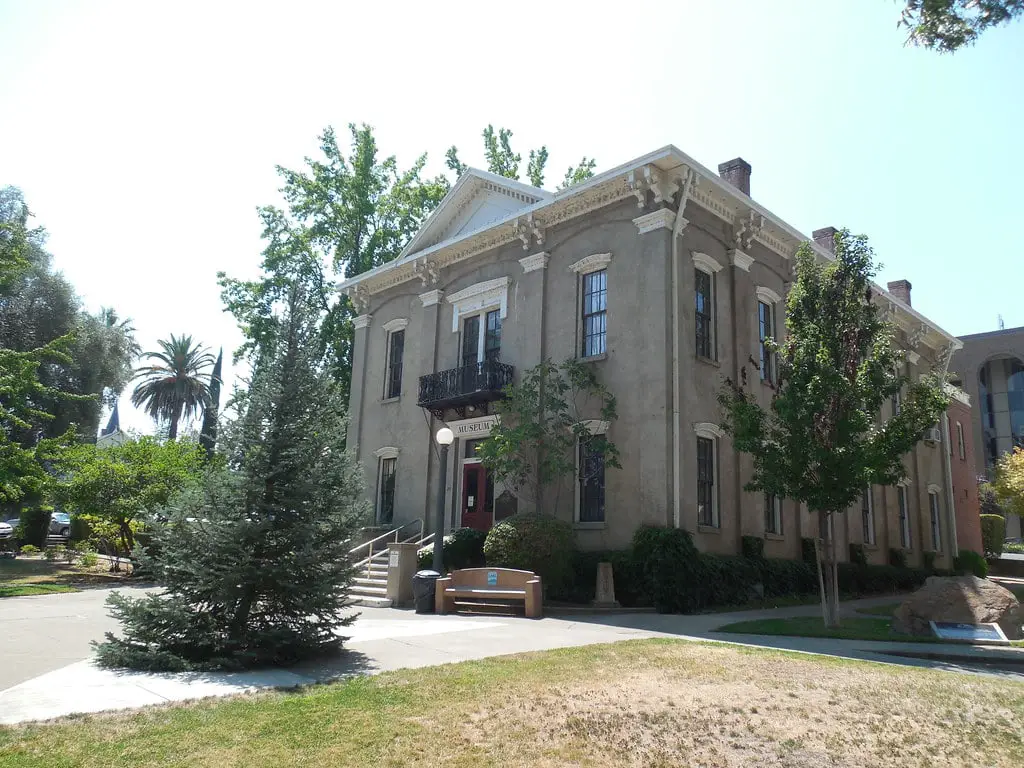A Legacy Etched in Brick
Standing tall in the heart of Lakeport, California, the Old Lake County Courthouse is a testament to the rich tapestry of local history. Constructed in 1870 by A.P. Pettit, this magnificent edifice has withstood the test of time, serving as the seat of government for Lake County until 1968.
The first courthouse in Lakeport was reduced to ashes by a fire in 1867. In a narrow vote, residents moved the county seat to Lower Lake.
But three years later, the county seat was moved back to Lakeport before a new courthouse could be built. It was on the site of the original courthouse that the Georgian-style Lake County Courthouse was erected.
A.P. Pettit, the mastermind behind this architectural marvel, hailed from New York. After moving to California in 1853, Pettit became a well-known figure in the construction industry, especially for his brick manufacturing prowess in the Butte Creek Canyon.
His expertise in brick construction played a crucial role in the courthouse’s survival in the 1906 San Francisco earthquake with only minor damage.
The courthouse’s robust brick structure is complemented by its elegant Georgian-style design, a popular architectural style in the 18th century characterized by symmetry and grandeur.
The Lake County Courthouse, with its symmetry and solid build, is a prime example of this architectural style, standing out as a beacon of Lakeport’s rich heritage.

In 1968, when more modern facilities were completed, the courthouse was repurposed, saving it from demolition. It became the Lake County Museum, a local history and culture treasure trove, educating the residents and visitors about the region’s past, from the indigenous Pomo to the American pioneers.
Today, it remains an essential landmark in Lakeport, a testament to the enduring legacy of Lake County’s rich history.
More Than a Courthouse
From 1871 until 1968, the Old Lake County Courthouse served as a vibrant hub of local government. It witnessed numerous precedent-setting trials on water rights, profoundly shaping the region’s water policy. However, perhaps the most notorious episode in its history is the “White Cap” murder trial held in 1890, a grim display of vigilantism.
The courthouse was more than just a place for legal proceedings. In addition, the basement housed the county school’s library for many years, further reinforcing its centrality to the community. Yet, the courthouse’s role has evolved over the decades, becoming a site for memory and learning.

The Courthouse Transformed
In 1968, the courthouse ceased to serve its original function, but its journey was far from over. The building was saved from demolition and repurposed into the Lakeport Historic Courthouse Museum. This transformation breathed new life into the old courthouse, turning it into a window to the past for locals and visitors alike.
Today, the museum, nestled within the historic courthouse, offers a panoramic view of Lake County’s history. From exhibits on local geology to artifacts from the Pomo Indians, the region’s original inhabitants, the museum provides a comprehensive narrative of the region’s past.
Unveiling Local Treasures
One of the museum’s standout features is its collection of Eastern Pomo basketry – one of the largest in the world. It’s an intimate glimpse into the heritage of the local Native Americans, prompting deep appreciation for their craftsmanship and culture.
But the museum isn’t just about artifacts and exhibits. It’s a living, breathing entity that keeps the spirit of Lake County’s past alive.
From hosting murder mystery dinners in the historic courtroom to unveiling new exhibits like “Crime and Punishment in Lake County,” the museum serves as a dynamic cultural hub, bringing the community together through shared history.

Visiting the Courthouse Museum
Once you step inside, you’ll find yourself surrounded by intriguing exhibits. Marvel at the collection of Pomo baskets and other Native American artifacts, a testament to the county’s indigenous heritage.
Explore the geologic history of Clear Lake through engaging displays, and feast your eyes on the gem and mineral display. Early pioneer artifacts tell tales of those who first settled in this area, while the restored courtroom offers a glimpse into Lake County’s judicial past.
For those interested in delving more profound, the museum’s research library and photograph collection are worth a visit.
The Historic Courthouse Museum doesn’t just cater to history buffs, it’s also committed to being accessible to all. The museum is in downtown Lakeport, with 2-hour limited street parking around the building. Handicapped parking can be found near 3rd and Main Street.

Concrete paths lead from the sidewalk and streets to the museum entrance, about 250 feet away. The main doors to the museum are located up eight stairs, but there’s an accessible ramped entrance on the 4th Street side of the building. Once inside, you can explore two floors of exhibits, accessible via about 30 railed steps to the second floor, a landing, or a new elevator.
The Historic Courthouse Museum is open from Thursday to Saturday, from 10:00 am to 4:00 pm. Please note that the museum is closed from Sunday to Wednesday and on county-observed holidays.
If you need assistance, you can reach out during phone hours, from 10 am to 4 pm from Wednesday to Saturday and from Noon to 4 pm on Sunday.
Final Thoughts
The Old Lake County Courthouse in Lakeport, California, is more than a historical landmark. It’s a bridge between the past and the present, a symbol of the enduring spirit of Lake County, and a beacon of local and Native American history.
Through its transformation into the Lakeport Historic Courthouse Museum, it continues to educate, inspire, and bring the community together.

